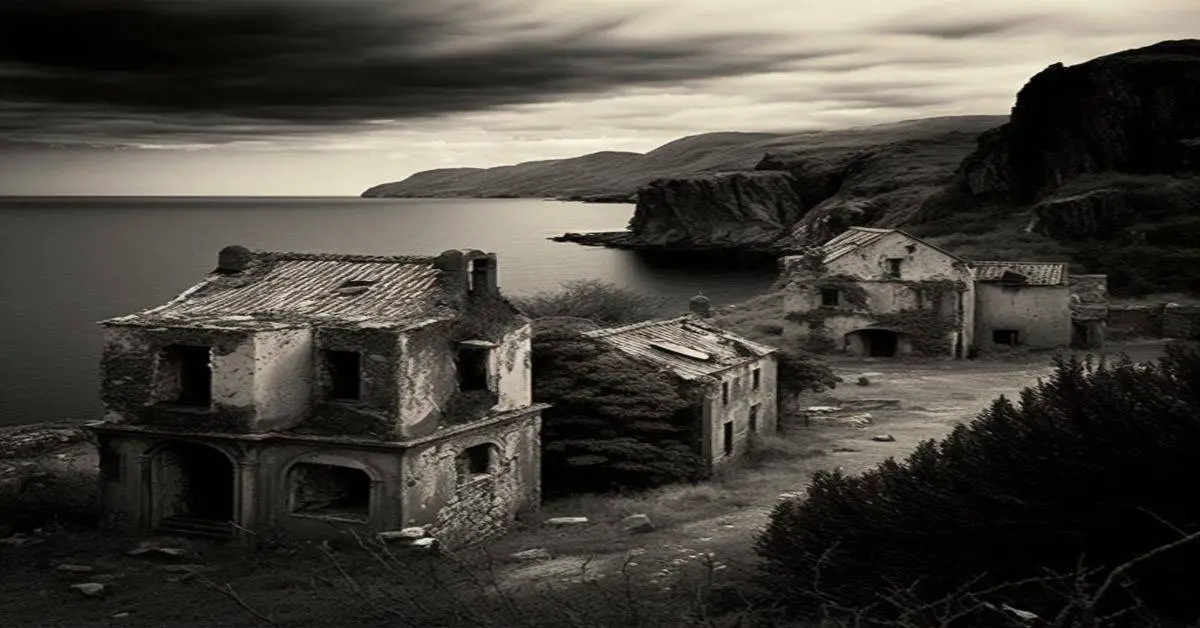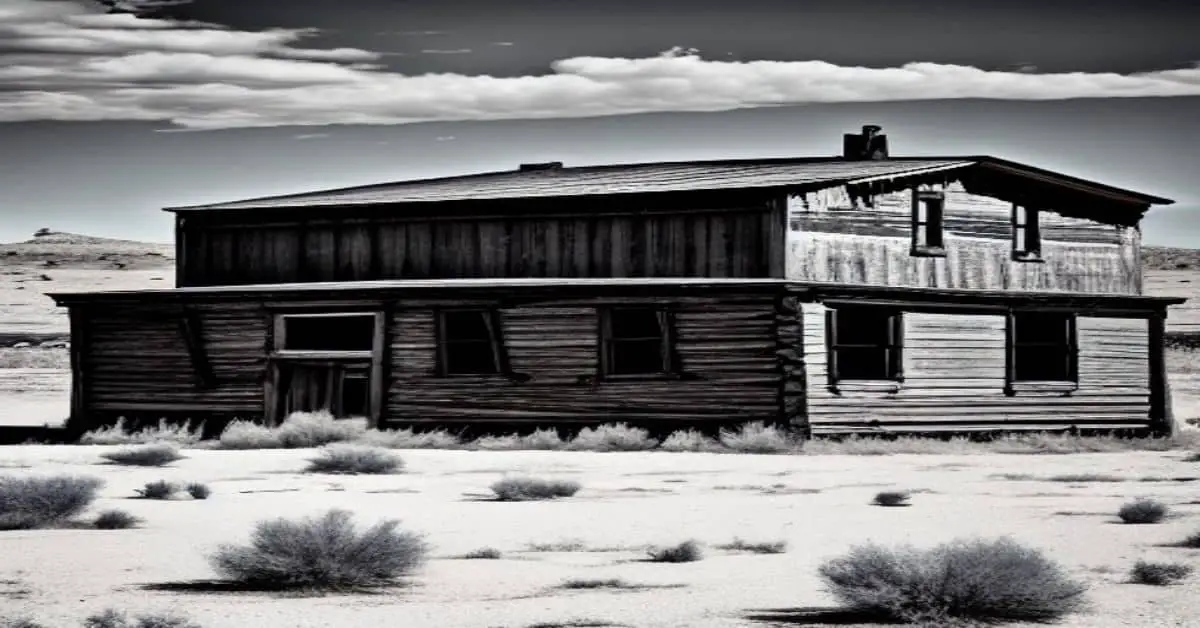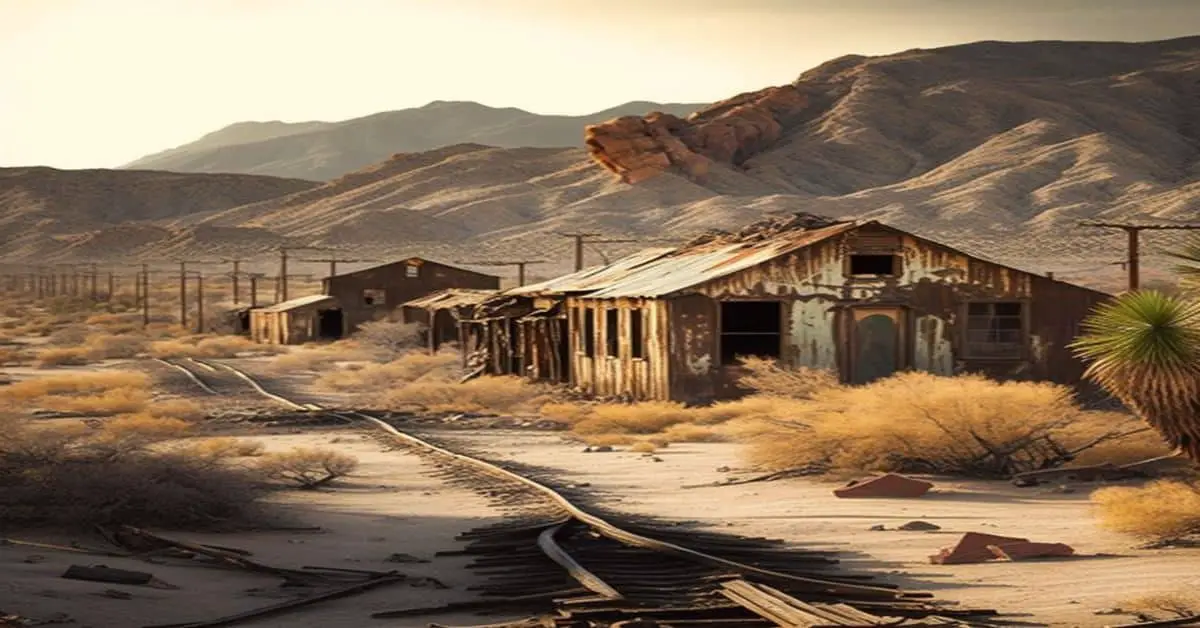The abandoned mining town of Helvetia in Pima County, Arizona is a fascinating relic of the state’s industrial past. Once a thriving community of mostly Mexican immigrants, Helvetia was known for its copper mining industry. However, the town’s fortunes were short-lived, as the mines closed in 1911 due to plummeting copper prices.
Today, Helvetia can be explored by intrepid adventurers willing to venture off the beaten path. This article will provide an in-depth look at the history of Helvetia, its climate and location, and its remaining attractions. Readers will better understand this once bustling community and the lives of those who called it home.
From the town’s historic cemetery to its crumbling buildings and mining equipment, the remains of Helvetia offer a unique glimpse into Arizona’s past. Discovering this abandoned mining town is a journey back in time, allowing visitors to connect with the state’s rich cultural heritage.
Key Takeaways
- Helvetia was established in 1899 as a copper mining town and was once a thriving community of mostly Mexican immigrants, but the mines closed in 1911 due to plummeting copper prices, devastating the town’s economy and population.
- Helvetia offers a unique glimpse into Arizona’s past and can be explored by intrepid adventurers willing to venture off the beaten path. Visitors can observe the different styles of headstones and markers in the cemetery dating back to the late 1800s and scavenge for artifacts such as old mining equipment, rusted machinery, and fragments of buildings that have been left behind.
- The town is located in a valley surrounded by mountains, with the Santa Rita Mountains to the east and the Tucson Mountains to the west. The mild winter and hot summer climate provided the perfect conditions for copper mining, and the remaining attractions provide an in-depth look at the history of Helvetia, its climate and location.
- Visitors can choose from various nearby accommodations, including hotels, motels, and camping sites, and those who are interested in exploring the area can also hike through the beautiful Santa Rita Mountains or visit the nearby Saguaro National Park.
Location and Climate
Located in Pima County, Arizona, Helvetia was a small mining town that flourished during the early 1900s. The town’s mild winter and hot summer climate provided the perfect conditions for copper mining, which was the primary industry in the area. Helvetia was situated in a valley surrounded by mountains, with the beautiful Santa Rita Mountains to the east and the rugged Tucson Mountains to the west.
Despite being an abandoned mining town, Helvetia still attracts visitors who are interested in exploring its rich history. The best time to visit Helvetia is anytime, as the weather is generally warm throughout the year. Visitors can choose from various nearby accommodations, including hotels, motels, and camping sites.
Those who are interested in exploring the area can also hike through the beautiful Santa Rita Mountains or visit the nearby Saguaro National Park.
History and Industry
The history of Helvetia reveals that copper mining was the main industry that sustained its population.
The town was established in 1899 and quickly became a hub for copper mining, attracting mostly Mexican laborers who worked in the mines.
The mining operations were successful for a short period of time, but by 1911, the drop in copper prices led to the shutdown of the mines.
This devastated the town’s economy and population, causing many residents to leave in search of work elsewhere.
Despite the unsuccessful smelter and shutdown of the mines, Helvetia’s copper mining industry left a lasting impact on the town.
The Mexican population, who made up most of the town’s residents, brought their own cultural traditions and way of life, which can still be seen in the town’s few remaining buildings and scattered remnants.
Today, Helvetia serves as a reminder of Arizona’s mining history and the industry’s impact on the state’s development and economy.
“Helvetia was founded in 1891 for the settlement of workers from the surrounding copper mines. At its peak, the city had 300 inhabitants, of which most were Mexicans. At one point, Helvetia had a public school (run by School District No. 14, Pima County). In 1911, the mines closed, due to low commodity prices. The post office, which had opened on December 12, 1899, closed on December 31, 1921, marking the end of the town.”
https://www.mindat.org/loc-49290.html
Attractions and Remains
One notable aspect of Helvetia is the cemetery, which attracts visitors interested in the town’s history. The cemetery is located on the outskirts of town and contains graves dating back to the late 1800s. Visitors can explore the cemetery and observe the different styles of headstones and markers used during that time. Some of the graves belong to the miners who worked in the copper mines, while others belong to the families who lived in the town.
The cemetery provides a glimpse into the lives of the people who once lived and worked in Helvetia. Aside from the cemetery, scattered remnants of buildings and equipment can be found throughout the town. Visitors can scavenge for artifacts such as old mining equipment, rusted machinery, and fragments of buildings that have been left behind.
These remnants serve as a reminder of the town’s once-bustling industry and the lives that were impacted by it. While exploring Helvetia’s remains, visitors can gain a deeper understanding of the town’s history and imagine what life was like for those who once called it home.
Frequently Asked Questions
What was the daily life like for residents in Helvetia during its mining boom?
During Helvetia’s mining boom, residents’ daily routines revolved around the copper industry. Social dynamics were shaped by the mostly Mexican population and limited facilities. Life was tough, with long work hours and poor living conditions.
How did the closure of the mines in 1911 impact the town and its residents?
The closure of Helvetia’s copper mines in 1911 significantly impacted the town’s economy, leading to job losses and social changes. The Mexican population, which constituted the majority of residents, faced adversity due to the shutdown of the mining industry.
What efforts have been made to preserve and/or restore any of the remaining buildings or structures in Helvetia?
Efforts have been made to preserve and restore Helvetia’s structures, including the cemetery and a few remaining buildings. However, the effectiveness of these efforts is unclear. There are currently no plans for future development or preservation of the land.
Are any notable or infamous events or individuals associated with Helvetia’s history?
Notable figures associated with Helvetia include Jack Dunn, a legendary miner, and the infamous Bisbee Deportation of 1917. Local legends tell of ghost sightings and the cursed gold of the area.
Are there any plans to develop or repurpose the land where Helvetia once stood?
No plans exist to develop or repurpose the land where Helvetia once stood. However, given its environmental impact and archaeological significance, preservation efforts may be undertaken to protect the remaining buildings and artifacts.


